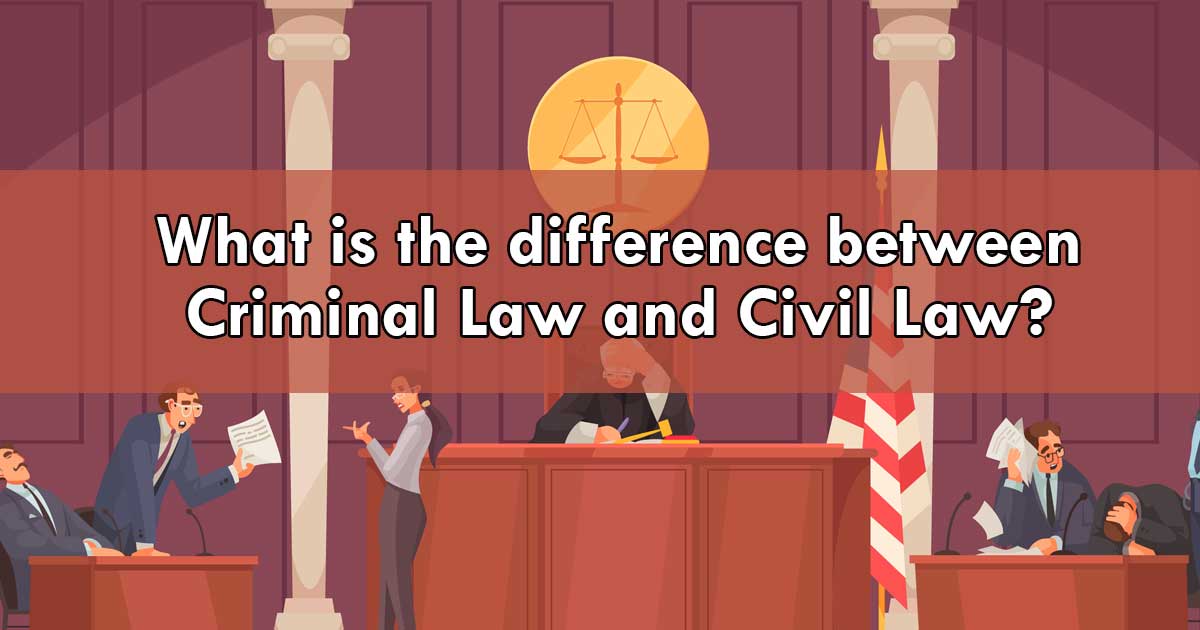Navigating the legal landscape can be complex, and a fundamental distinction lies in the types of cases pursued under criminal law and civil law. In the United States, these two branches of law address different aspects of disputes and offenses. In this article, we’ll unravel the key differences between criminal law and civil law, shedding light on their unique purposes, procedures, and outcomes.
Defining Criminal Law
1. Purpose:
- Prosecution for Offenses: Criminal law focuses on offenses against the state or public. Its primary purpose is to punish individuals for crimes committed, seeking justice on behalf of society.
2. Initiator of Proceedings:
- Government Prosecution: Criminal cases are initiated by the government, represented by prosecutors. The government acts as the plaintiff, bringing charges against an individual or entity accused of committing a crime.
3. Burden of Proof:
- Beyond a Reasonable Doubt: In criminal cases, the prosecution must prove the defendant’s guilt beyond a reasonable doubt. This is a high standard, reflecting the gravity of criminal charges.
4. Potential Penalties:
- Criminal Sanctions: If found guilty, the defendant may face penalties such as imprisonment, fines, probation, or other criminal sanctions.
5. Examples:
- Crimes Against Society: Examples of criminal cases include theft, assault, murder, drug offenses, and white-collar crimes, all of which are considered offenses against society.
Defining Civil Law
1. Purpose:
- Resolution of Disputes: Civil law is concerned with resolving disputes between private parties, such as individuals, businesses, or organizations. Its primary goal is to compensate the injured party rather than to punish the wrongdoer.
2. Initiator of Proceedings:
- Private Party Initiates Lawsuit: Civil cases are initiated by private parties, known as plaintiffs, who file lawsuits seeking remedies for harm suffered.
3. Burden of Proof:
- Preponderance of the Evidence: The burden of proof in civil cases is less stringent than in criminal cases. The plaintiff must demonstrate their case by a preponderance of the evidence, showing it is more likely than not that the defendant is responsible for the harm.
4. Potential Remedies:
- Compensatory Damages: If the plaintiff prevails, the court may award compensatory damages to cover losses, as well as other remedies like injunctions or specific performance.
5. Examples:
- Personal Injury Cases: Civil cases include personal injury claims, breach of contract disputes, family law matters (divorce, custody), and property disputes. These cases involve private individuals seeking compensation or resolution.
Key Differences
- Purpose and Focus:
- Criminal law focuses on punishing offenders for offenses against the state, while civil law aims to resolve disputes and compensate injured parties.
- Initiation of Proceedings:
- Criminal cases are initiated by the government, while civil cases are initiated by private parties.
- Burden of Proof:
- The burden of proof is higher in criminal cases, requiring proof beyond a reasonable doubt, compared to the preponderance of the evidence standard in civil cases.
- Penalties vs. Remedies:
- Criminal cases may result in penalties such as imprisonment, while civil cases often lead to remedies like compensatory damages or injunctive relief.
Conclusion: Navigating Legal Realms
In conclusion, understanding the distinctions between criminal law and civil law is essential for anyone interacting with the legal system. Criminal law addresses offenses against society, with the government as the prosecuting entity, while civil law deals with private disputes, initiated by individuals seeking remedies for harm suffered. Knowing the purpose, procedures, and potential outcomes of each branch empowers individuals to navigate the legal realms effectively, whether seeking justice for a crime or resolution for a civil matter.









Leave a Reply